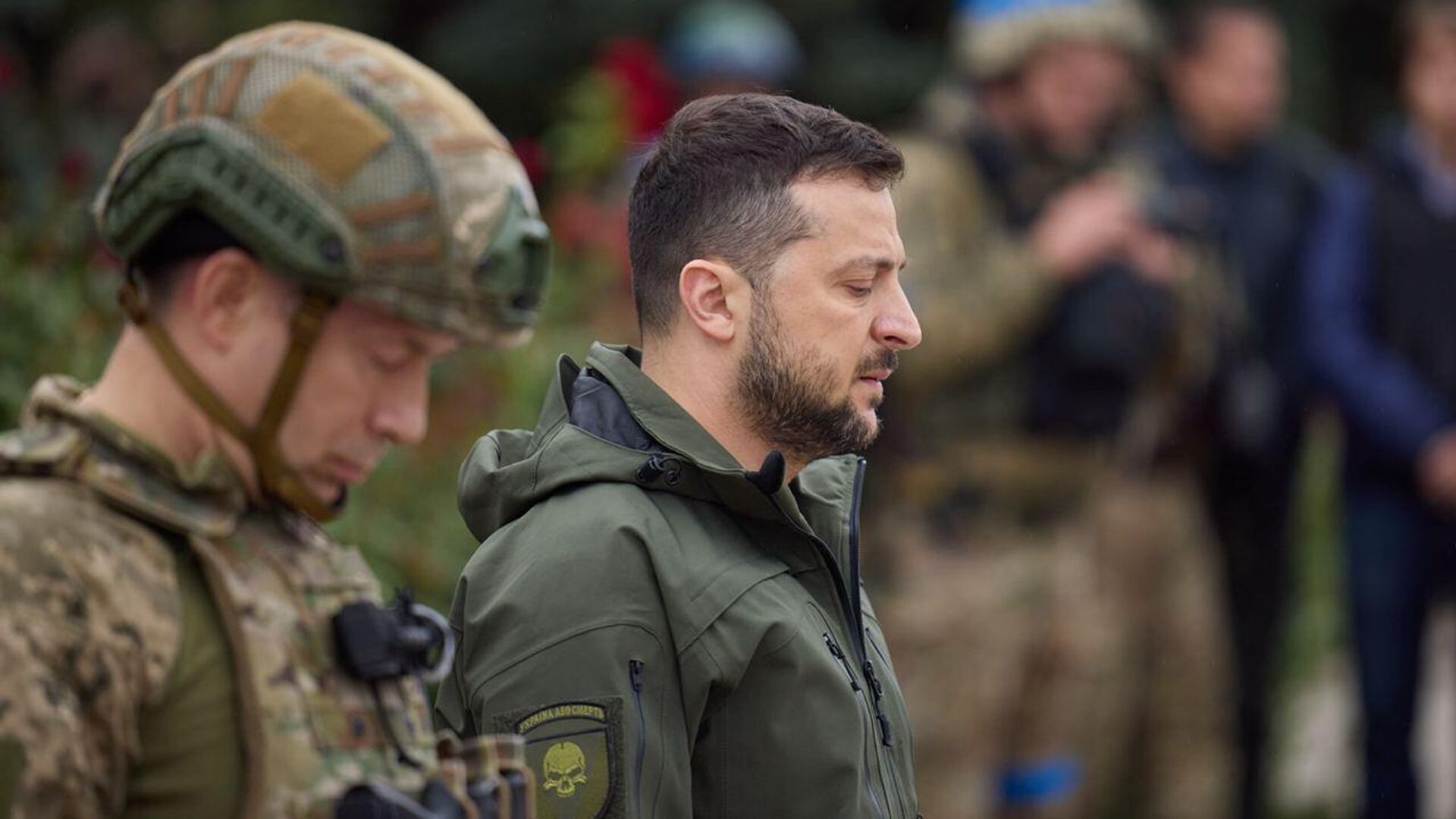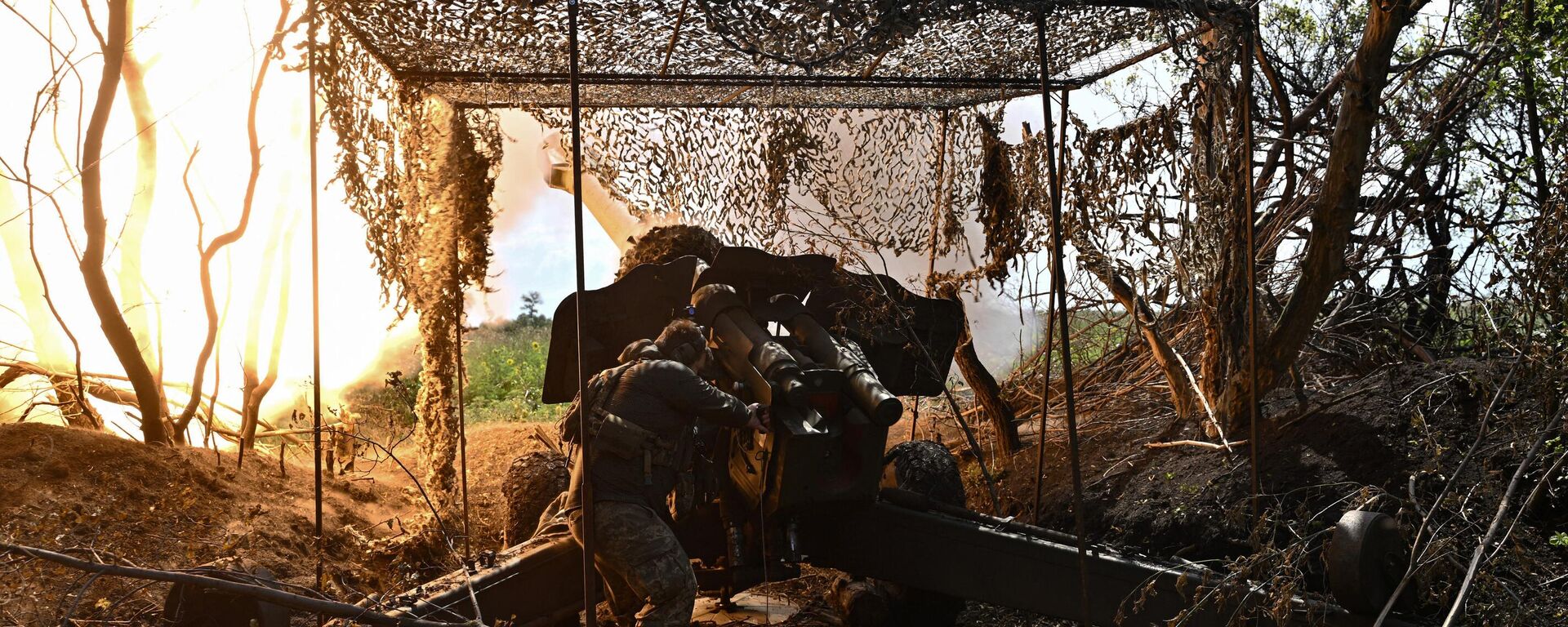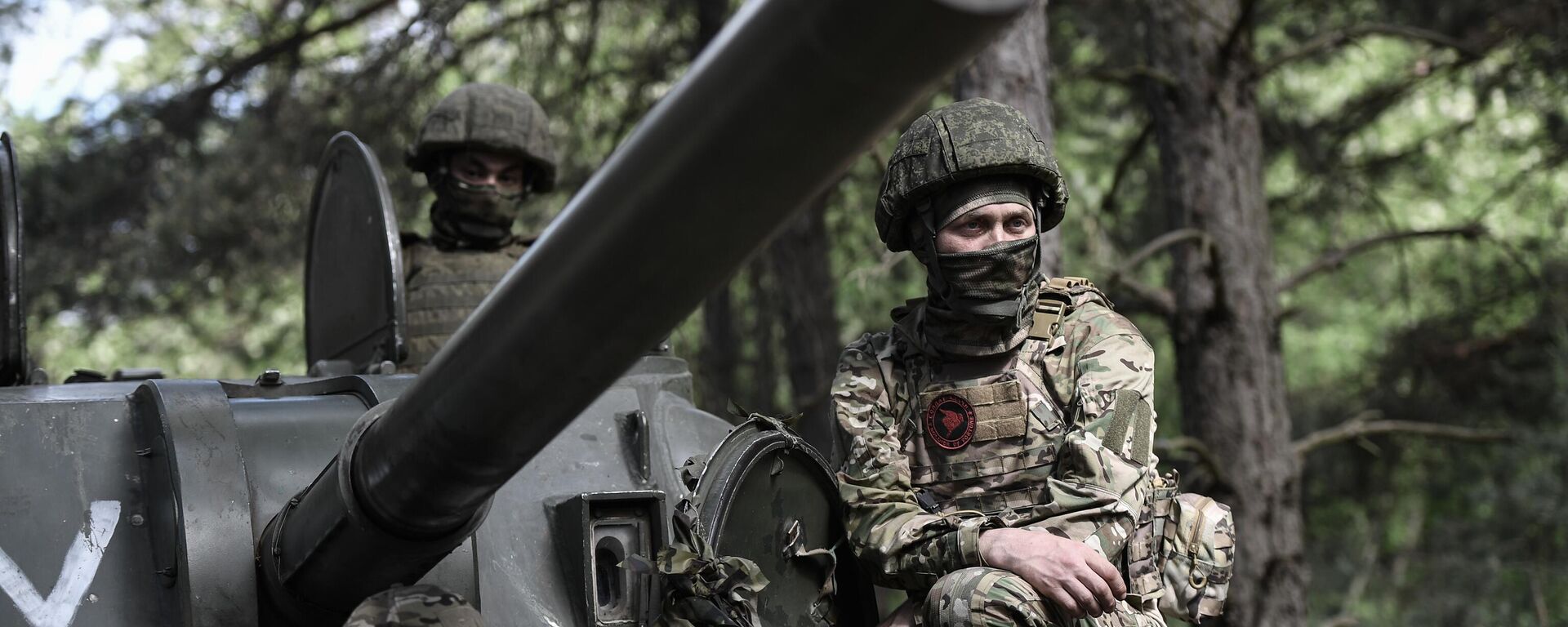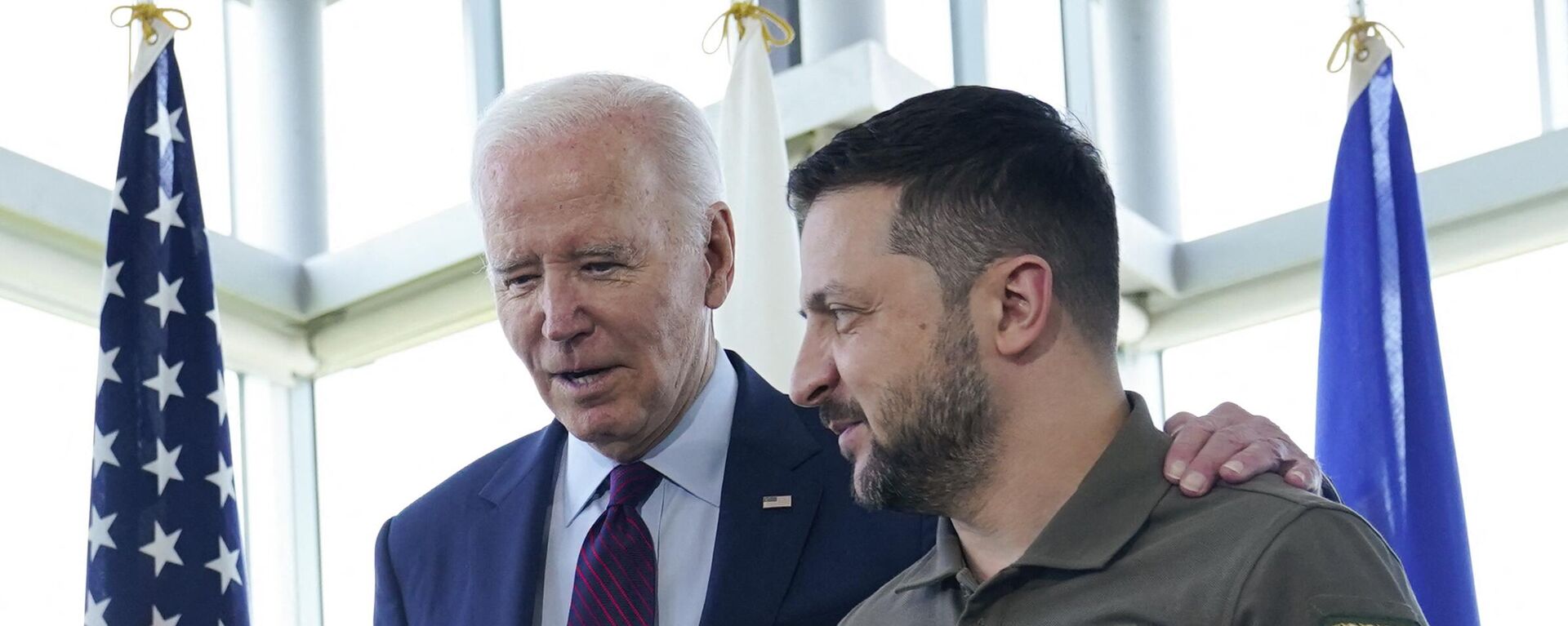Why Zelensky's Vow to Continue Counteroffensive Through Winter is Wishful Thinking

© Photo : Telegram / Zelensky Official
Subscribe
The Kiev regime is reportedly going to continue its "counteroffensive" in autumn and through winter, as per President Volodymyr Zelensky. But does Ukraine have enough resources for that?
Ukraine's president has argued that the country made a mistake by taking a pause last year after gaining some of the territory previously liberated by Russia.
Speaking to the US press, after a day of meetings on Capitol Hill and the White House, Zelensky pledged to keep fighting through the autumn and winter this year. He also vowed to take Artemovsk (also known as Bakhmut) and a couple "more cities". He said that US assistance should keep flowing to Ukraine, despite growing calls in the US Congress to reduce or halt the financial assistance altogether.
Does Ukraine Have Weapons to Sustain Counteroffensive?
Zelensky's vows appear to be nothing but wishful thinking: it's unclear where he would get more troops and munitions for the protracted fighting according to Aleksey Borzenko, a military journalist and deputy chief editor of the "Literary Russia" newspaper.
"Who will attack? Over the past two or three months, the Russian Army has crushed a large number of [Ukrainian] personnel, armored vehicles and howitzers. So who will attack? This question is very important. Who will they send to the frontline? In reality, they can assemble a new army by spring, train it at the training grounds, teach it to shoot, teach it to use equipment," Borzenko told Sputnik.
It's unlikely that they would come with some sort of a sophisticated offensive strategy, according to the expert. They have already used both Western and old Soviet tactics to attack Russia's positions; they tried to push through Russia's defenses in large groups and in small groups. However, they got bogged down, sustained heavy losses, and eventually failed to move through Russia's multi-layered defenses, Borzenko noted.
Likewise, they are unlikely to use NATO-grade heavy tanks during autumn and winter, since these heavy armored vehicles are not meant for dire weather conditions, the expert continued. He suggested that the Ukrainian military will use what it has left of its Soviet-era T-72 stash.
"What other weapon [could be used]? They are waiting for aviation, but the F-16 will not change much," he said. "[Russian forces] will hunt for them and shoot them down. But they also need F-16s not so that they can organize air battles on the line of contact with [Russian] fighters, but in order to launch tactical missiles. These are all the latest missiles that they received in a few months, and they are waiting for ATACMS."
Still, Zelensky specified during his recent interviews with US media that those long-range missiles would be used to "strike targets deeper" in Russia's territory. This fits into Kiev's terrorist tactics of launching strikes against civilian areas, nuclear power plants and infrastructure facilities in Russia. Yet this does not have anything to do with the balance of power on the battlefield.
When it comes to the battleground, artillery duels and counter-battery combat, Ukrainians don't have enough munitions, per the analyst. They are expecting to get more 155 mm shells from NATO but it will take time. Their 152 mm ammo stockpiles have been depleted too, he noted.
"How many 152 mm shells do they have left? They receive them from the countries of the former Warsaw Pact. These are still old stock from the 1980s," Borzenko said.
How Could Counteroffensive Unfold?
"It defies logic and common sense to continue launching these kinds of operations under those kinds of weather conditions," Michael Maloof, a former Pentagon senior security policy analyst, told Sputnik. "Also limiting him [Zelensky] will be what he has available and in what shape they're in."
Earlier this month General Mark Milley, former Joint Chiefs chairman, told the Western press that colder conditions would make it much harder for Ukraine to maneuver. "Probably about 30 to 45 days' worth of fighting weather left," Milley said on September 10. Western observers warn that in late November, heavy rains will transform the battlefield into "impassable mud," substantially complicating Ukraine's effort.
Speaking to the US press, Oleksandr Tarnavskyi, the commander of Kiev's Tavriya Operational and Strategic Group of Forces, tried to make a point by saying that the coming winter will not slow down Ukraine's counteroffensive, only to expose the dire conditions Kiev's troops are facing. He said that the weather can be a serious obstacle during an advance, but "considering how we move forward, mostly without vehicles, I don’t think [the weather] will heavily influence the counteroffensive."
Tarnavskyi de facto confirmed what Russian President Vladimir Putin told a press briefing in July: Putin explained that the Ukrainian Armed Forces "bring people to the frontline in armored vehicles, throw them out, and this equipment immediately disappears… exposing people to the attacks of our artillery." The Ukrainian military has lost over 71,000 troops over just three months of the botched counteroffensive.
"It's an uphill battle completely," said Maloof. "I don't see any good parts to this for Zelensky in his equation. Whatever he's going to be getting will be very limited and it may even be cut. And in terms of the amounts that would be provided, and then the other factor, not to mention what would be needed to overcome some very strong Russian defenses that have been allowed to be built over time. So it's an uphill task."
The former Pentagon analyst does not expect the Kiev regime to make any progress on the ground, let alone taking Bakhmut again.
West's Ukraine Fatigue on Rise
Meanwhile, Western people have grown weary of the protracted conflict, according to Maloof.
"The Europeans and indeed people in the United States are becoming very, very tired of this," the former Pentagon analyst said. "First of all, they don't know what the point was when the Ukrainians resisted all efforts for negotiation and have been shelling the eastern portion since 2014, which is predominantly Russian speakers."
In addition, a number of US military observers and even Democratic presidential candidate Robert Kennedy Jr. have questioned why Washington and NATO derailed the Russo-Ukrainian peace talks in March 2022 in Istanbul. The crux of the matter is that the preliminary peace agreement inked in Istanbul could have stopped hostilities in the very beginning of Russia's special military operation.
"Other issues are arising," Maloof continued. "I know internally in the United States people are increasingly focused on the internal situation, the internal politics, the internal impact of inflation. We got strikes everywhere. We got cities burning down as in Hawaii. And so we're out sending money, billions, tens of billions of dollars of equipment and what have you to Ukraine to protect its borders. But we're not protecting our own. It defies common sense and logic. And I think the people, the American people, certainly from the US standpoint, see that. And we're seeing more resistance now in the coming now from the front of the House of Representatives to any future requests."
The US mainstream press acknowledges that there are "cracks" in "once rock-solid" support for Ukraine in the US and Europe. Republican representatives are opposing a new hefty $24 billion package for Ukraine; Warsaw threatened to stop providing Kiev with weapons over Ukraine's complaint against Poland to the World Trade Organization (WTO); Slovakia's presidential candidate Robert Fico vowed to stop supporting Kiev if elected.
Likewise, Hungary, Poland, and Slovakia banned agricultural products from Ukraine and Budapest made it clear that it wouldn't support Ukraine's integration in the European Union.
The situation is growing dire for Kiev and it could turn even worse if a new wave of energy crisis engulfs Europe this winter and if the US finally falls into a recession.







